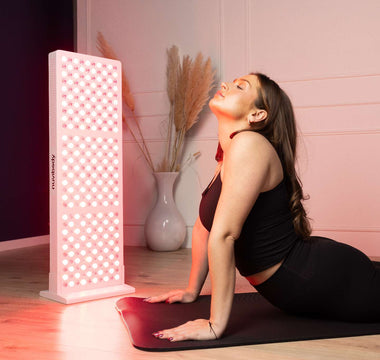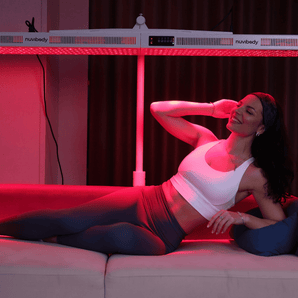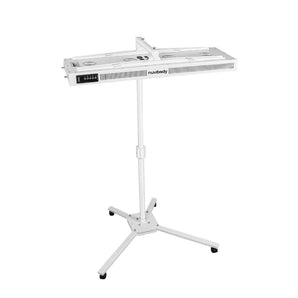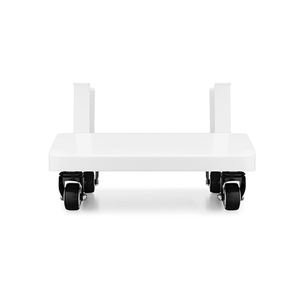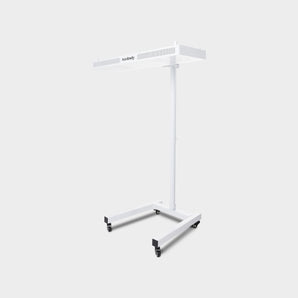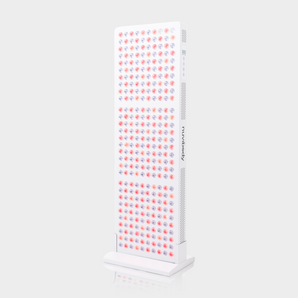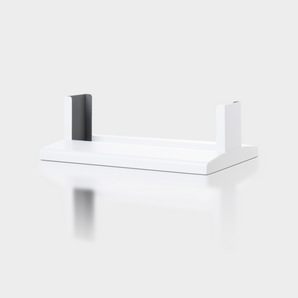Arthritis pain can have a huge impact on your daily life. But did you know that red light therapy, a simple and non-invasive treatment, can effectively help relieve joint pain and inflammation? In this blog, you’ll discover the science behind red light therapy, how it works, and why it can be a safe and effective solution for people with arthritis and chronic pain.
Table of contents:
|
Introduction to Red Light Therapy
Red Light Therapy, also known as photobiomodulation, is a non-invasive method that uses low levels of red or near-infrared light to treat physical complaints. In recent years, red light therapy has gained popularity as an effective treatment for a variety of conditions, including arthritis and joint pain.
How does red light therapy work?
Red light therapy devices deliver specific wavelengths of light that are absorbed by the skin and into the cells. This process stimulates the mitochondria, the powerhouses of the cell, to produce adenosine triphosphate (ATP), which improves cellular energy and performance. Red light therapy uses two types of light:
- Red light (660 nm): This is easily absorbed by surface tissues and cells, aiding in skin rejuvenation and improved blood circulation.
- Near-infrared light (850 nm): This light can reach deeper tissues, making it useful for relieving muscle pain and reducing inflammation.
Clinical Evidence: Red Light Therapy for Arthritis
- Red Light Therapy for Arthritis and Joint Pain: Red Light Therapy has a strong clinical track record for osteoarthritis pain. In a double-blind clinical trial, 50 patients with degenerative osteoarthritis in both knees were treated with red light, infrared light, or a placebo for ten days. There were no significant improvements in pain in the placebo group. However, the groups receiving red and infrared light saw their pain reduced by more than 50%. This led the research team to conclude that Red Light Therapy is “effective in relieving pain and disability in degenerative osteoarthritis of the knee.”
- Red Light Therapy for Ankle Joint Pain: In a 2018 clinical trial, patients with acute ankle sprains were treated with red light from LED devices for six days. Compared to a placebo group, patients reported significantly less ankle joint pain after three days. The researchers concluded that Red Light Therapy is “effective for pain and edema in the initial phase of ankle sprains.”
- Red Light Therapy for Low Back Pain: Red Light Therapy has consistently shown good clinical results for low back pain. Infrared and near infrared light have shown improved pain ratings in studies and research, especially for the treatment of chronic low back pain.
Other Health Benefits of Red Light Therapy
In addition to pain relief, red light therapy offers other health benefits:
- Improved Cell Function and Energy Production: By stimulating the mitochondria, red light therapy improves cell health and energy production in the body.
- Managing Inflammation: Red light therapy can help reduce inflammation, which is particularly beneficial for conditions such as arthritis.
- Improved Blood Circulation and Healing: Red light therapy promotes blood circulation, which is essential for the healing process.
- Better Sleep and Circadian Rhythm: The therapy can also help regulate sleep patterns and support a healthy circadian rhythm.
Risks and side effects of red light therapy
Red light therapy is generally considered safe. Studies have shown that using LED devices for red light therapy at home is both safe and effective, with minimal risks or side effects. Read more about the contraindications of red light therapy .
Conclusion and Recommendations
Red Light Therapy is a promising treatment option for arthritis and joint disorders. The therapy is supported by clinical evidence and offers a safe, non-invasive method of relieving pain and inflammation. As red light therapy continues to grow in popularity, it is becoming a valuable tool in the arsenal of treatments for chronic pain conditions.
Using a quality red light therapy lamp such as one from Nuvibody is quick and easy and can improve pain with regular use.



